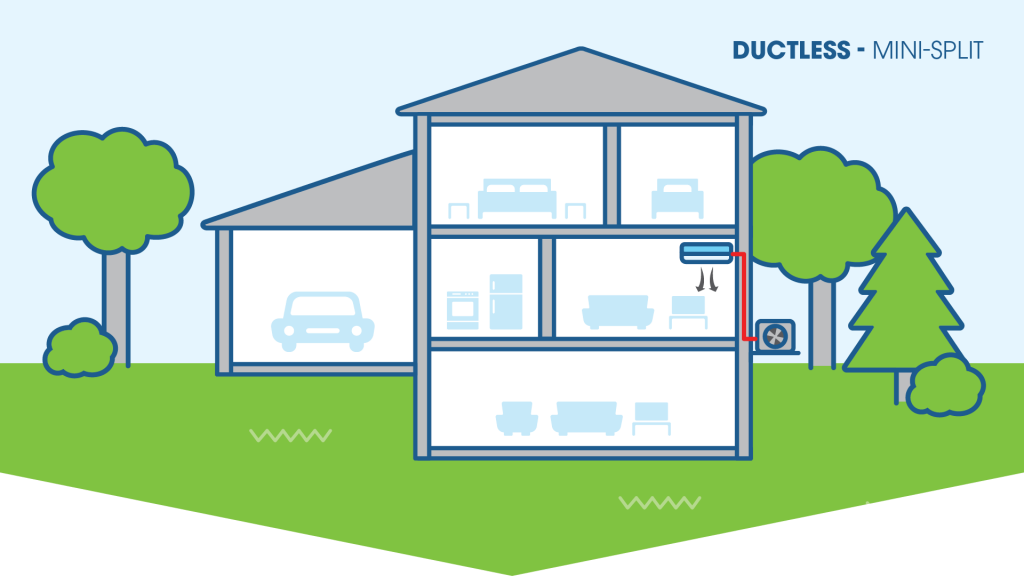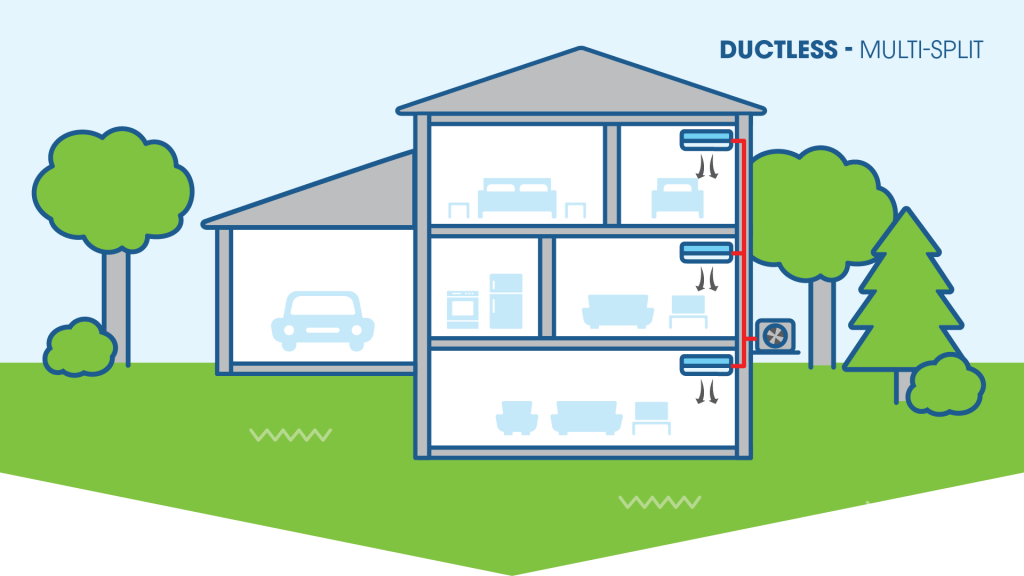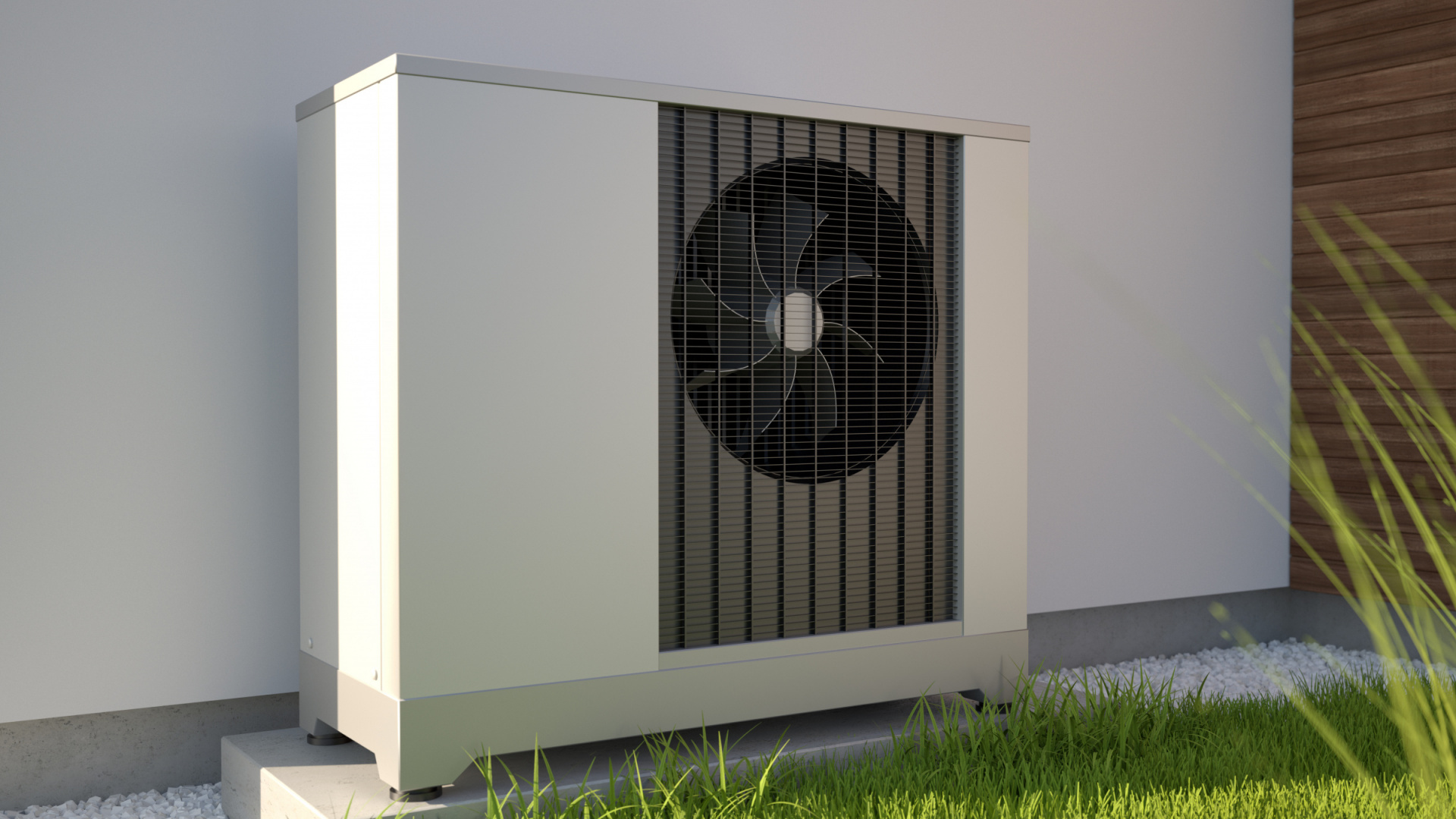HOW THEY CAN HELP YOU SAVE ENERGY
Looking for an energy-efficient heating and cooling system? Consider an air source heat pump. They transfer heat in the air from one place to another, using up to 30% less energy than standard electric heating systems. Air source heat pumps efficiently regulate the temperature in your home, working most efficiently when your thermostat is at a consistent temperature setting.
HOW AN AIR SOURCE HEAT PUMP WORKS
An air source heat pump typically has both an indoor unit and an outdoor unit. As air travels between the units, a compressor circulates a high-pressure liquid refrigerant that absorbs and releases heat—the same process as your refrigerator. In winter, heat is pulled from the outdoor air to warm your home. In the summer months, it works in reverse, pushing warm air outside to cool your home.
CONVENTIONAL VERSUS COLD CLIMATE
There are two kinds of air source heat pumps: conventional and cold climate. While conventional heat pumps shut off when the outdoor temperature reaches -10°C, cold climate heat pumps can operate down to -25°C, depending on the manufacturer’s specifications. For that reason, cold climate air source heat pumps are more suitable in Manitoba.
It’s important to note that when it becomes too cold outside, an auxiliary heating source is required to maintain the warmth in your home. Air source heat pump output and performance reduces significantly as the temperature decreases. Ice can build up on the outdoor unit and automatically activate a defrost cycle. This reverses the air flow, pushing warm air through the outdoor coil to melt built up ice and should take only a few minutes.
WHICH TYPE IS RIGHT FOR YOU?
Air source heat pumps come in centrally ducted and ductless models. The best design for your needs depends on your existing heat source and building size.
CENTRALLY DUCTED
A centrally ducted heat pump uses forced-air ducting to distribute heating and cooling throughout your home. This allows air to reach individual rooms and heat the whole house. Your existing ducting may require modifications to support the heat pump system.

DUCTLESS
If your home uses heating from baseboards or a radiator, you likely don’t have ducting installed. In this case, a ductless air source heat pump would suit your needs.
We sometimes refer to ductless units as either mini-split or multi-split. A mini-split heat pump has one outdoor unit and one indoor head, usually mounted on the wall. To warm your entire home, you’ll need multiple indoor heads. This is called a multi- split.
A ductless air source heat pump is also a good option if part of your home requires additional heating and cooling or has an open concept floor plan. They’re also generally more affordable as they don’t require ductwork.
DUCTLESS MINI-SPLIT

DUCTLESS MULTI-SPLIT

NEXT STEPS
before you upgrade your heating system, it’s a good idea to first make your home as energy efficient as possible. Starting with building envelope upgrades, like insulation, will reduce your heating and cooling load, so your contractor will be able to properly size your heat pump system.
We offer rebates and financial support for select ductless and centrally ducted air source heat pumps! Be sure to check which offer is best for you before starting any work, since some require pre-approval.
Check out the rest of our articles in our heat pump series.


